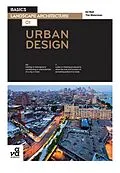Basics Landscape Architecture 01: Urban Design seeks to define and describe the role played by landscape architecture in urban design, an interdisciplinary practice that is concerned with defining the form of human settlements. It provides a brief history and definition of urban design and the roles of the various professions involved. Urban Design looks at the elements of urban form and the importance of contextual details, from the scale of the city and its region to the importance of materials. The text uses case studies to explore the philosophies and methodologies of urban design and to explain the importance of of urban design to landscape architecture and, in turn, the importance of landscape architecture to urban design.
Autorentext
Tim Waterman has worked on numerous large-scale strategic and master planning projects in central London and southeast England. He lectures in landscape architecture at the Writtle School of Design, UK.
Inhalt
Introduction. How to get the most out of this book. What is urban design?: Definition and debate; Evolution of urban form; Early urban design; Industrial age urban design; Urban design since the nineteenth century. Context: City and territory; City; Neighbourhoods and blocks; Street; Detailing. Measure: Street; Block; Buildings and open spaces; Person; Infrastructure and utilities. Movement: Innovation and trends; Speed; Modes; Mass vs individual; Stasis. Community and culture: Societies and culture; Politics and economy; Community and individuals; Necessities; Diversions. Projects and processes: Structure; Lines; Points; Beyond; Green. Conclusion. Glossary. Bibliography. Contacts and useful resources. Acknowledgements. Picture credits. Working with ethics.
